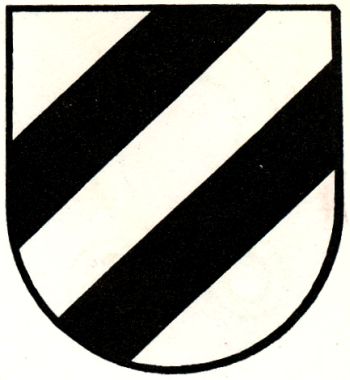Neuweiler (Weil im Schönbuch): Difference between revisions
Jump to navigation
Jump to search
Knorrepoes (talk | contribs) m (Text replacement - "/Arms of " to "/Arms (crest) of ") |
Knorrepoes (talk | contribs) m (Text replacement - "{{media}}" to " {{de1}} {{media1}}") |
||
| Line 24: | Line 24: | ||
Before 1927 the municipality had no seals or arms. The proposal for the initial arms was to have two bends, with alternating green and red squares, symbolising the main road with two rows of houses and gardens. These arms were approved in 1927, but already soon after the bends became black, as the arms were mainly used on the black and white seal of the village. | Before 1927 the municipality had no seals or arms. The proposal for the initial arms was to have two bends, with alternating green and red squares, symbolising the main road with two rows of houses and gardens. These arms were approved in 1927, but already soon after the bends became black, as the arms were mainly used on the black and white seal of the village. | ||
{{ | |||
{{de1}} | |||
{{media1}} | |||
[[Civic Heraldry Literature - Germany|'''Literature''']]: Hess and Gönner, 1960 | [[Civic Heraldry Literature - Germany|'''Literature''']]: Hess and Gönner, 1960 | ||
Revision as of 11:46, 26 December 2022
This page is part of the German heraldry portal Deutsche Wappensammlung |
Heraldry of the World |
|
German heraldry:
|
Selected collector's items from Germany:
|
NEUWEILER
State : Baden-Württemberg
District (Kreis) : Böblingen
Incorporated into : 1971 Weil im Schönbuch
| German | In Silber zwei schwarze Schräglinksbalken. |
| English | (Weil im Schönbuch) No blazon/translation known. Please click here to send your (heraldic !) blazon or translation |
Origin/meaning
The arms were officially granted on June 6, 1927.
Before 1927 the municipality had no seals or arms. The proposal for the initial arms was to have two bends, with alternating green and red squares, symbolising the main road with two rows of houses and gardens. These arms were approved in 1927, but already soon after the bends became black, as the arms were mainly used on the black and white seal of the village.
Literature: Hess and Gönner, 1960


